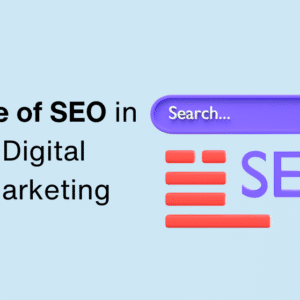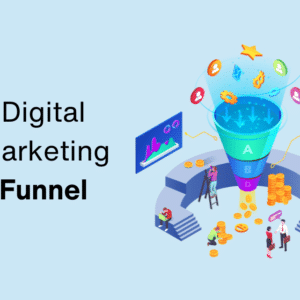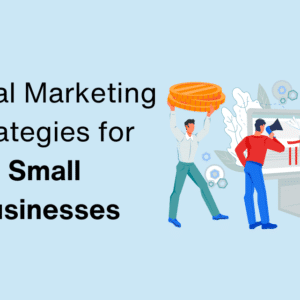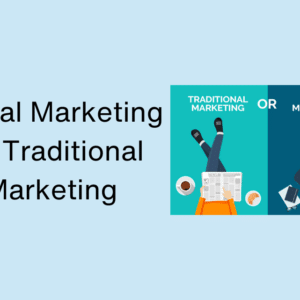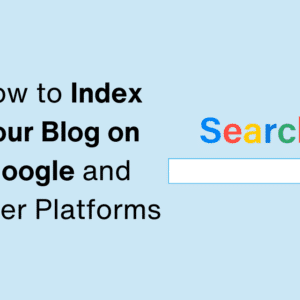Introduction
On-page SEO is a crucial component of any successful digital marketing strategy, as it directly impacts a website’s visibility and ranking in search engine results pages (SERPs). By optimizing on-page elements such as content, meta tags, and internal linking, businesses can improve their chances of ranking higher and attracting organic traffic. In this comprehensive tutorial, we’ll explore the On-Page SEO Best Practices for Better Ranking, providing actionable tips and insights to help you achieve better rankings and enhance your online presence.
Understanding On-Page SEO
Before diving into best practices, let’s define on-page SEO and its significance:
- On-Page SEO: On-page SEO refers to the optimization of individual web pages to improve their search engine rankings and organic visibility. It involves optimizing various on-page elements such as content, meta tags, headings, and internal links to make the page more relevant and valuable to both users and search engines.
- Significance: On-page SEO plays a critical role in determining a website’s relevance and authority for specific search queries. By optimizing on-page elements, businesses can improve their chances of ranking higher in SERPs, attracting more organic traffic, and ultimately, driving conversions and revenue.
On-Page SEO Best Practices
Let’s explore the key best practices for optimizing on-page elements to improve your website’s rankings:
Conduct Keyword Research
- Identify Target Keywords: Conduct keyword research to identify relevant keywords and phrases that align with your content and target audience’s search intent.
- Long-Tail Keywords: Target long-tail keywords with lower competition and higher relevance to capture specific user queries and attract more targeted traffic.
- Keyword Variations: Incorporate keyword variations and synonyms naturally throughout your content to improve topical relevance and broaden your reach.
Optimize Title Tags
- Include Target Keyword: Place your target keyword at the beginning of the title tag to signal its relevance to search engines and users.
- Keep it Concise: Keep title tags concise and descriptive, ideally under 60 characters, to ensure they display fully in search results and attract clicks.
- Engage Users: Craft compelling and click-worthy titles that entice users to click through to your page while accurately representing the content.
Write Compelling Meta Descriptions
- Unique and Descriptive: Write unique meta descriptions for each page that accurately summarize its content and value proposition.
- Include Keywords: Incorporate relevant keywords naturally within the meta description to reinforce relevance and improve visibility in SERPs.
- Call-to-Action (CTA): Include a clear call-to-action (CTA) in the meta description to encourage users to click through to your page.
Create High-Quality Content
- Relevant and Valuable: Create content that is relevant, valuable, and meets the needs of your target audience. Address common questions, provide solutions to problems, and offer unique insights.
- Keyword Placement: Naturally incorporate target keywords and related terms throughout the content, focusing on readability and user experience.
- Use Heading Tags: Organize content using heading tags (H1, H2, H3, etc.) to improve readability and structure. Include target keywords in headings to signal importance to search engines.
Optimize Image Alt Text
- Descriptive and Keyword-Rich: Write descriptive alt text for images that accurately describes the image content and includes relevant keywords.
- Accessibility: Ensure alt text provides valuable context for visually impaired users and improves accessibility.
- File Names: Use descriptive file names for images that include keywords to further optimize image SEO.
Improve Page Load Speed
- Optimize Images: Compress images and use appropriate file formats (JPEG, PNG) to reduce file size without compromising quality.
- Minimize CSS and JavaScript: Minimize and combine CSS and JavaScript files to reduce page load times and improve site performance.
- Enable Browser Caching: Leverage browser caching to store static resources locally, reducing server load and speeding up page rendering for returning visitors.
Enhance User Experience (UX)
- Mobile-Friendly Design: Ensure your website is mobile-friendly and responsive, providing a seamless user experience across devices.
- Clear Navigation: Design intuitive navigation menus and site structure to help users find the information they need quickly and easily.
- Reduce Bounce Rate: Create engaging and relevant content that keeps users on your site longer, reducing bounce rates and improving dwell time.
Optimize Internal Linking
- Contextual Links: Include contextual internal links within your content to guide users to related or relevant pages on your site.
- Anchor Text Optimization: Use descriptive and keyword-rich anchor text for internal links to provide context and signal relevance to search engines.
- Hierarchy and Structure: Create a logical hierarchy and structure for internal linking to distribute link equity and improve crawlability.
Monitoring and Measuring Success
After implementing on-page SEO best practices, it’s essential to monitor and measure the effectiveness of your efforts:
- Track Key Metrics: Monitor key metrics such as organic traffic, keyword rankings, click-through rates (CTR), and conversion rates to gauge the impact of your on-page SEO efforts.
- Use SEO Tools: Utilize SEO tools such as Google Analytics, Google Search Console, and third-party SEO platforms to track performance, identify opportunities, and diagnose issues.
- Iterate and Optimize: Continuously analyze data, iterate on strategies, and optimize on-page elements based on insights to improve rankings and drive sustainable results.
Conclusion
On-page SEO is a foundational aspect of any successful digital marketing strategy, as it directly influences a website’s visibility, relevance, and ranking in search engine results. By implementing best practices such as keyword optimization, title tag optimization, content creation, image optimization, and user experience enhancement, businesses can improve their on-page SEO and enhance their online presence. With a strategic approach, continuous monitoring, and data-driven optimization, businesses can achieve better rankings, attract more organic traffic, and ultimately, drive meaningful results that contribute to long-term success in the competitive digital landscape. By mastering on-page SEO best practices and integrating them seamlessly into your digital marketing efforts, you can position your website for sustained growth and success in the ever-evolving world of search engine optimization.
Also Read: A Comprehensive Tutorial about Demystifying the Role of SEO in Digital Marketing



